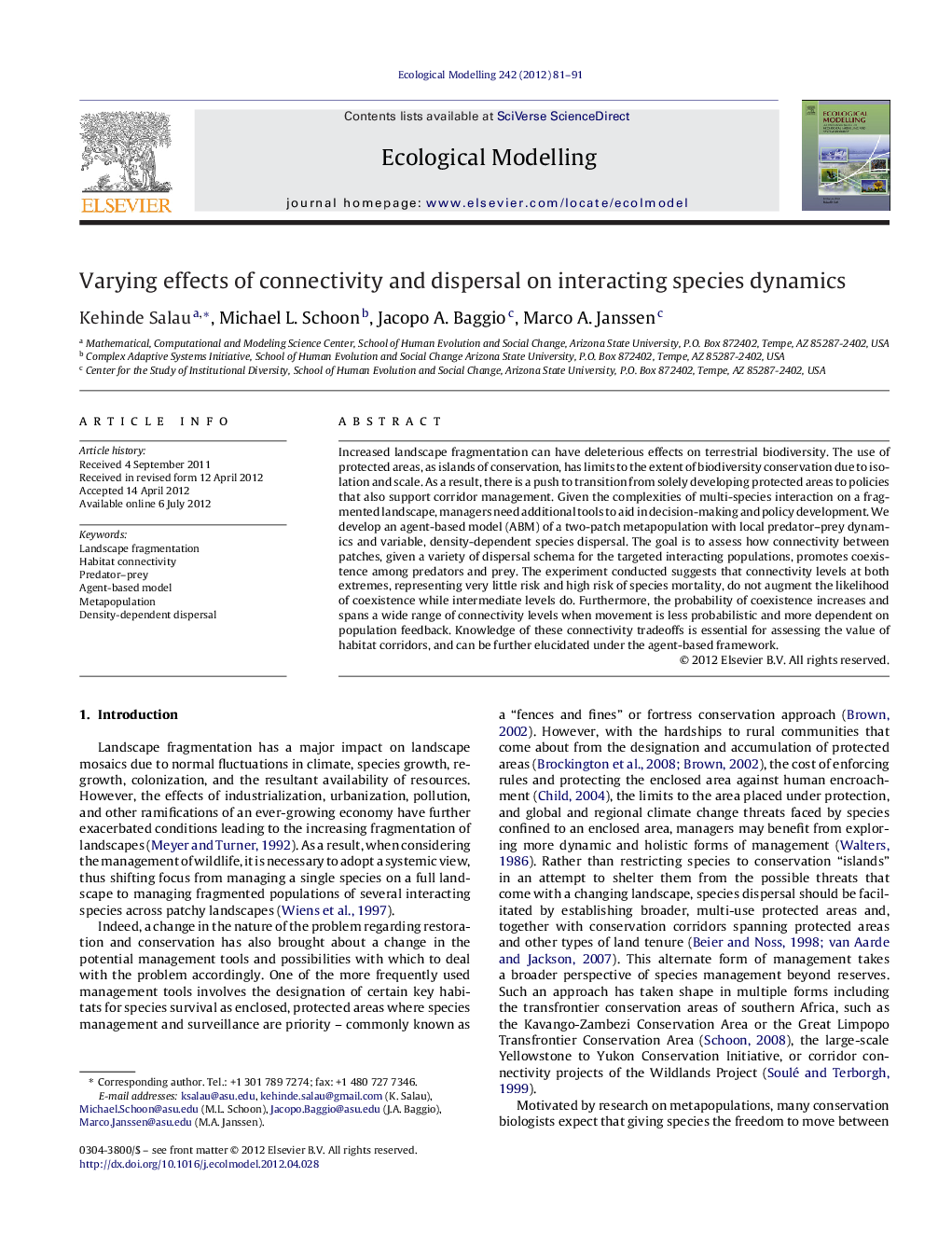| Article ID | Journal | Published Year | Pages | File Type |
|---|---|---|---|---|
| 4376376 | Ecological Modelling | 2012 | 11 Pages |
Increased landscape fragmentation can have deleterious effects on terrestrial biodiversity. The use of protected areas, as islands of conservation, has limits to the extent of biodiversity conservation due to isolation and scale. As a result, there is a push to transition from solely developing protected areas to policies that also support corridor management. Given the complexities of multi-species interaction on a fragmented landscape, managers need additional tools to aid in decision-making and policy development. We develop an agent-based model (ABM) of a two-patch metapopulation with local predator–prey dynamics and variable, density-dependent species dispersal. The goal is to assess how connectivity between patches, given a variety of dispersal schema for the targeted interacting populations, promotes coexistence among predators and prey. The experiment conducted suggests that connectivity levels at both extremes, representing very little risk and high risk of species mortality, do not augment the likelihood of coexistence while intermediate levels do. Furthermore, the probability of coexistence increases and spans a wide range of connectivity levels when movement is less probabilistic and more dependent on population feedback. Knowledge of these connectivity tradeoffs is essential for assessing the value of habitat corridors, and can be further elucidated under the agent-based framework.
► Agent-based models are suitable for studying interplay between species interaction and dispersal. ► A family of functions is utilized to represent varying levels of biased random movement in species. ► Low (high) weights between patches denote low (high) mortality risk, thus defining connectivity. ► Greater chance of coexistence between predator and prey occurs at intermediate connectivity levels. ► Likelihood of coexistence rises and spans wider range of connectivity when movement is less random.
